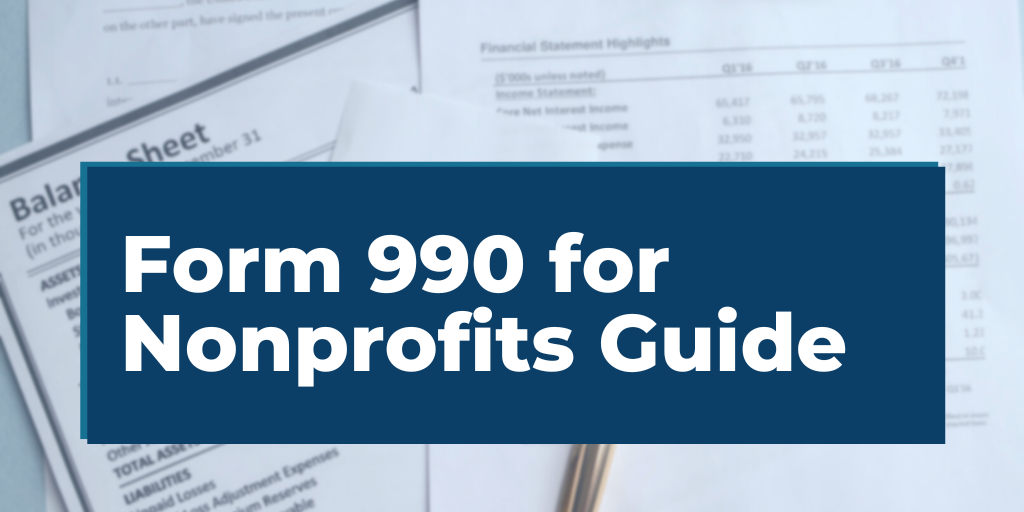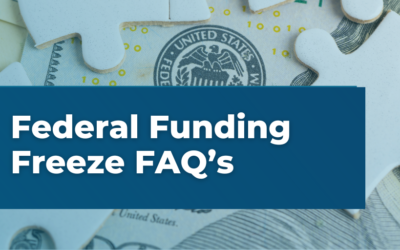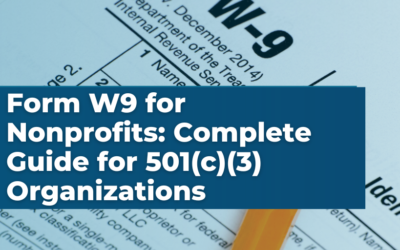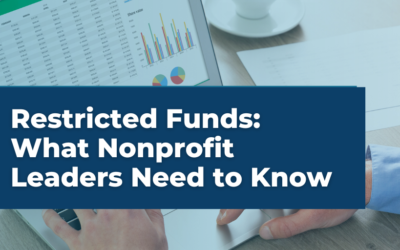Nonprofits are typically established for social or educational purposes with the primary objective of addressing a social, economic, or health issue. With the right support, they can flourish and make a profound impact on the world. However, even the strongest nonprofits have numerous opportunities to make them even more productive. Accounting is one of them, especially when it comes time to prepare for taxes.
Accounting is vital in business since it allows you to track income, expenses, and taxes. Nonprofits are no exception; each dollar must be properly allocated to a specific aim.
Are nonprofits tax-exempt?
If you are starting up your nonprofit, you might wonder whether or not your organization’s financial activity is tax-exempt. The good news is that while individuals and businesses must file complicated tax returns each year nonprofits typically do not. Most nonprofit organizations qualify for federal income tax exemption under subsections of Internal Revenue Code Section 501(c)(3). Hence the name!
Governments fund the activities of nonprofits and receive a direct advantage since nonprofits provide services that the government would otherwise be obliged to provide.
However, that doesn’t mean that nonprofits are exempt from all taxes. Tax-exempt status means that the organization is free from paying federal corporate income tax on income derived from activities that are substantially relevant to the reasons for which the corporation was formed. However, the organization must pay Unrelated Business Income Tax (UBIT) on earned income unrelated to the purpose of the organization’s exemption.
To take advantage of this benefit, you need to get familiar with Tax Form 990, which is the primary instrument used by the IRS to collect information about tax-exempt organizations.
This resource will cover everything you need to know about Form 990, including its various forms, filing instructions, deadline, and other essential details.
What is the Form 990?
The IRS uses Form 990 to record vital financial information for organizations. For instance, information collected by form 990 can be used by the IRS to ensure that the organization is fulfilling its objective and deserves to keep its tax-exempt status.
Most states rely on Form 990 to perform charitable and other regulatory monitoring.
In a nutshell, Form 990 is the IRS’s approach to determining whether your nonprofit is legitimate and financially honest. Essentially, it’s how the IRS assures your organization is trustworthy. When you get things right, the government is much more likely to fund your programming in the future. If you’re applying for ARPA funds, for example, you will be required to attach your most recent 990 filings.
Keep in mind that each state has different requirements for tax regulations and compliance.
Different Versions of Form 990
The four most common IRS Form 990 versions are Form 990-N, Form 990-EZ, Standard Form 990, and Form 990-PF. Although they all serve the same basic purpose, there are a few important differences between these forms and the organizations required to file them.
990-N
Small tax-exempt organizations that have yearly gross receipts of $50,000 or less are required to file Form 990-N.
990- EZ
Slightly larger organizations whose gross receipts are $200,000 or less and total assets of $500,000 or less file a 990 EZ.
Schedule A
Tax-exempt organizations typically utilize this form to give required information regarding their public charity status and public support. Schedule A must be made available for public examination by organizations. This enables members of the public, such as supporters and contributors, to monitor the organization’s operations and verify that it’s carrying out its objective.
Schedule B
If a nonprofit receives contributions of $5,000 or more from any one contributor, it must include Schedule B with its Form 990-EZ or 990.
Form 990 Full
Larger organizations with $200,000 or more in gross receipts and total assets more or equal to 500,000 must file the regular Form 990.
990- PF
This form should be filed by a private foundation, regardless of financial status. This form asks your organization to report on the private assets of your foundation, its trustees and officials, grants, and financial operations.
If you aren’t sure which form your organization needs to file, book a free consultation with Velu! We’ll point you in the right direction.
How to File Form 990
No longer are you required to print and fill out pages of paperwork. You are now required to submit Form 990 online. Here’s how:
- Visit Express Tax Exempt, which is IRS-authorized E-filing software.
- First, you must register for an account. You will need to enter information like your phone number, address, email address, etc.
- After, you will be required to enter information about your organization such as EIN, location, organization name, and other logistical information.
- Then you select the form 990 type based on your gross receipt from the previous fiscal year.
- Then you select either an interview-based or form-based process.
- After providing the required information, you will submit it, and you will be updated on the status of your form.
Form 990 Components
Reading Form 990 can be challenging at first, but if you know where to look for your organization’s crucial details, you’ll find it quite simple.
Form 990 is comprised of 12 sections.
Part I: Part 1 covers overview information such as the sort of non-profit, its mission, and the number of workers and volunteers. Part I end with net assets, or fund balances, which are just your annual expenses and revenue.
Part II: Signature Block. Sign and date! The easiest part of the form.
Part III: Part 3 is the Statement of Program Service Accomplishments, which contains information on new services if major changes were made to existing programs. Don’t forget to tell potential funders the facts on what you accomplished this year through a Year-in-Review or Impact Report.
Part IV: Checklist of Required Schedules. Through numerous schedules, nonprofits are subject to a range of disclosure and compliance requirements. Part 4 answers will determine whether your organization must attach another schedule with additional information.
Part V: Other IRS Filings and Tax Compliance Statements. Here you’ll find inquiries about other financial accounts your organization may have.
Part VI: Part 6 is all about governance, management, and disclosure. It will inform you of the number of voting members of the group, whether staffers have family or commercial links, and embezzlement.
Part VII: In this section, the organization must include all of its current officers, directors, and trustees, regardless of whether they were compensated. The organization must also disclose up to 20 current individuals who meet the description of a key employee, as well as its five current highest-paid employees (if paid more than $100,000).
Part VIII: This section displays the financial information for the institution’s financial year. A revenue statement that accounts for revenue received from related or exempt funds as well as unrelated business income.
Part IX: According to this section, tax-exempt organizations must disclose all expenses in three categories: (1) program services, (2) management and general, and (3) fundraising. The government, press, and general public pay close attention to this section to track how much an institution spends on its exempt purpose. Tools like Charity Navigator and Charity Watch are often used to evaluate nonprofits on their financial activity.
Part X: In this section, you will have to fill out the balance sheets. The balance sheet of an organization shows net assets or fund balances.
Part XI: This part is a reconciliation of the organization’s net assets.
Part XII: Financial Statement Reporting. This part details the organization’s financial accounts and reporting (for example, if the form is prepared using cash, accrual, or another method of reporting).
Are 990 Forms Public?
When you send the IRS your completed 990, they are not the only ones who will have access to the records. All Form 990s are public, which means that anybody can read the information.
Each year, the nonprofit organization Guidestar collects Form 990 data from the IRS. One of Guidestar’s goals is to make such data easily accessible to the public, so that anyone interested may see what a certain charity is up to. Transparency is important to the government and previous donors!
Starting in 2016, the IRS began making this information available on IRS.gov as well. So, your 990 filings will be made public on both the Guidestar and the IRS websites.
How you fill out Form 990 says a lot about your nonprofit. Since everyone will have access, you must complete it correctly to protect your organization’s reputation.
2022 Form 990 Deadline
Your nonprofit’s tax forms are due on the 15th of the fifth month following the end of the nonprofit’s fiscal year. Therefore, Form 990 is due on May 15th, 2022 for organizations that operate on a calendar fiscal year.
If your nonprofit is unable to file your nonprofit taxes by the deadline of May 15th, you have the option of extending your time by six months. You can request an extension of the 990 deadline by submitting Form 8868. If accepted, the majority of charitable organizations’ filing dates will be moved to November 15th.
The IRS is extremely serious when it comes to missing deadlines. If you forget to file (or are simply lazy), you will have to pay missed tax deadline penalties.
You will be fined $20 per day for each day your return is late. The maximum penalty is $10,000 or 5% of gross receipts, whichever is less.
If your company’s gross receipts exceed $1,000,000, the daily penalty increases to $100 per day, with a maximum charge of $50,000. If you fail to file for more than three years, the fines increase significantly. You will lose your tax-free status and you will have to reapply and pay filing fees.
Nonprofit Tax Filing Made Easy
Nonprofits often file form 990 incorrectly or incompletely. It’s not surprising! Filing 990 Tax Forms is not easy. Just remember, mistakes in form 990 can result in damaging your nonprofit’s image and even losing some donors.
If you are a nonprofit and are gearing up for tax season, Velu‘s professional services team is there for you! Our nonprofit tax accounting services will alleviate your tax headache.
With Velu, you can focus on your actual agenda without having to waste time poring over financial paperwork. We’ll ensure your organization reports its finances accurately.
We have a proven track record of helping nonprofits harness the power of financial software to make tax season simple, and also to use the same data to strategically grow programming. Whatever your organization’s next step may be, we’re here to catalyze growth. Get started with a free consultation today!





